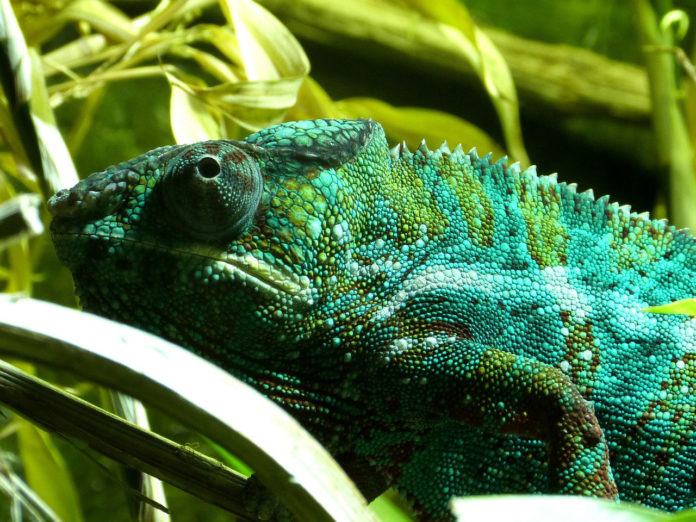Creatures, for example, chameleons and cuttlefish, can change color because of chromatophores: skin cells with contractile fibers that move pigments around. The shades are spread out to demonstrate their color or squeezed together to make the cell clear.
Now, scientists at the University of Cambridge have created artificial chameleon skin’ that changes color when exposed to light. Scientists developed this material using tiny gold particles -coated in a polymer shell, that are then squeezed into microdroplets of water in oil. When exposed to heat or light, the particles stick together, changing the color of the material.
The material can also be dubbed as artificial chromatophores- whose color-changing abilities rely on light-powered nano-mechanisms, and the ‘cells’ are microscopic drops of water.
When the material is heated above 32C, the nanoparticles store a lot of elastic energy in a small amount of time, as the polymer coatings remove all the water and collapse. This has the impact of forcing the nanoparticles to bind together into tight clusters. When the material is cooled, the polymers take on water and extend, and the gold nanoparticles are firmly and immediately pushed separated, like a spring.
Dr. Andrew Salmon from Cambridge’s Cavendish Laboratory, the study’s co-first author, said, “Loading the nanoparticles into the microdroplets allows us to control the shape and size of the clusters, giving us dramatic color changes.”
The geometry of the nanoparticles when they bind into clusters determines which color they appear as: when the nanoparticles are spread apart, they are red and when they cluster together they are dark blue. However, the droplets of water also compress the particle clusters, causing them to shadow each other and make the assembled state nearly transparent.
What’s fascinating is, the material is developed within a single layer, thus can only able to change to a single color. However, scientists are further planning to use different nanoparticle materials and shapes in extra layers to make a fully dynamic material, like real chameleon skin.
During the study, scientists noticed that this artificial chameleon skin could ‘swim’ in simple ways, similar to the algae Volvox as a light on one edge of the droplets causes the surface to peel towards the light, pushing it forward.
Co-author Sean Cormier said, “This work is a big advance in using nanoscale technology to do biomimicry. We’re now working to replicate this on roll-to-roll films so that we can make meters of color-changing sheets. Using structured light, we also plan to use the light-triggered swimming to ‘herd’ droplets. It will be fascinating to see what collective behaviors are generated.”
The study was funded by the European Research Council (ERC) and the Engineering and Physical Sciences Research Council (EPSRC) and reported in the journal Advanced Optical Materials.
